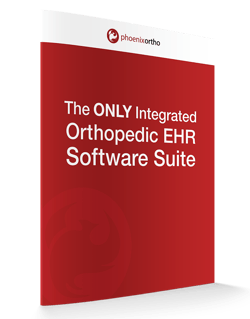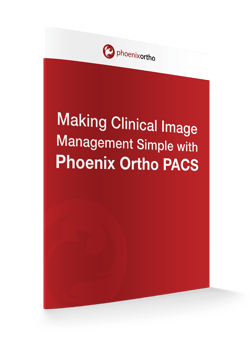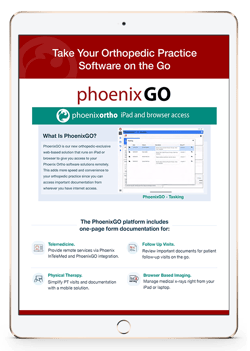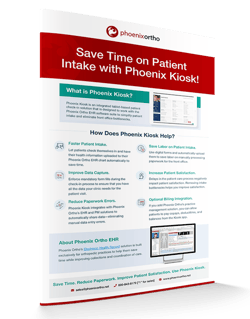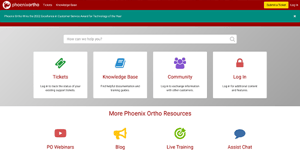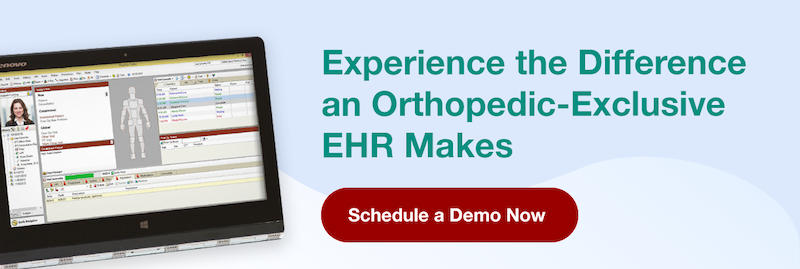Knowing the intricacies of the Merit-Based Incentive Payment System (MIPS) is practically a requirement for orthopedic clinics that want to earn reimbursements from Medicare patients.
Of course, this is easier said than done. There are hundreds of quality measures that are included in MIPS, periodic changes, eligibility exclusions, and other risks to consider when dealing with the program.
Speaking of changes, what’s in store for MIPS in 2023? Let’s take a look at what MIPS is and what orthopedic practices should watch out for in 2023:
What Is MIPS?
MIPS is a system of value-based reimbursement that falls under the Quality Payment Program (QPP). MIPS is used to determine Medicare payment adjustments and allows “eligible clinicians” (ECs) to get a payment bonus or penalty (or no adjustment whatsoever) depending on composite performance scores.
The four performance categories of MIPS are:
- Quality. This is an assessment of the quality of care provided to Medicare patients based on performance measures created by the Centers for Medicare & Medicaid Services (CMS), specialty organizations, and medical professional groups.
- Improvement Activities. An assessment of how you improve your care processes, patient engagement, and access to care.
- Promoting Interoperability. An assessment category centered on how care providers promote patient engagement and the electronic exchange of information using certified Electronic Health Record (EHR) technology.
- Cost. An assessment based on the cost of care provided to patients. For MIPS, CMS calculates cost measures based on Medicare claims.
It should be noted that a MIPS performance year begins on January 1 and ends on December 31 each year. Eligible clinicians need to submit the data they collected for MIPS by March 31 of the following year to get payment adjustments under Medicare Part B claims for the year after the data was submitted.
In other words, if you collected data for MIPS in 2023, you would need to submit it by March 31 of 2024, and get payment adjustments in 2025.
Ultimately, MIPS is a streamlining of previous pay-for-performance programs that helps clinicians of all specialties more accurately report the performance of their practice.
3 Things Orthopedists Should Watch Out for with MIPS in 2023
For 2023, there are a few specific things that orthopedic surgeons, practice managers, and other staff will want to watch out for. In a recent Virtual Summit (available for view online to current Phoenix Ortho Customers with Knowledge Base access), we featured a discussion by Kyle Meadors, the MIPS/MACRA/CQM expert for Chart Lux Consulting, on the areas of MIPS that orthopedists should watch out for:
Traditional MIPS
Kyle reported that, for the most part, traditional MIPS won’t be changing much from calendar year 2022 to 2023. It essentially has the same measures and activities from 2022, but there are a couple of important things to note within the Promoting Interoperability category:
- There’s a new requirement to connect to a Prescription Drug Monitoring Program (PDMP)—Phoenix Ortho users already have this capability built into their Phoenix Ortho platform’s Rx management solution—open a support ticket now to get connected.
- Electronic Case Reporting is required under CMS’ Promoting Interoperability Program (PIP) and MIPS—though orthopedists may be able to claim an exclusion from this requirement due to not treating or diagnosing “any reportable diseases for which data is collected by their jurisdiction’s reportable disease system during the performance period.”
Growth of MVP
In MIPS, MVP stands for “MIPS Value Pathways,” a new reporting option that starts in 2023. This is an optional reporting solution for calendar year 2023 that is separate from traditional MIPS.
While MVP has the same four main categories as traditional MIPS, MVPs are separated into distinct subsets of measures and activities that are related to a given medical care specialty. Examples of MVPs that may be applicable to an orthopedist might include:
- Improving Care for Lower Extremity Joint Repair—an MVP focusing on “providing fundamental treatment and management of patients with osteoarthritis and lower extremity surgical repair.”
- Advancing Rheumatology Patient Care—An MVP for clinics concerned with “providing fundamental treatment and management of rheumatological conditions.”
- Promoting Wellness—an MVP focusing on the theme of “promoting quality care for patients in order to reduce the risk of diseases, disabilities, and death.”
These are just a few of the current MVPs that are available. There may be more paths to be added by CMS in the near future.
Starting this year, MVPs are an alternative pathway for clinicians along with the traditional MIPS program you have done in the past. If clinicians elect to stay with traditional MIPS, there is nothing for them to do, but if they do wish to participate in an MVP, they must register with CMS to do this sometime between April 3 and November 30 of this year.
Kyle Meadors urged viewers to start looking into this program in the near future since CMS has indicated they would like to eventually retire traditional MIPS and have clinicians only work within an MVP pathway of their choosing.
Information Blocking/EHI Sharing
For MIPS, interoperability and quality of care seem to be major focuses for 2023, as the changes to information blocking and electronic health information (EHI) indicate.
Some of the major changes Kyle highlighted in the virtual summit include:
- New FHIR API Requirements. Pronounced like “fire,” FHIR stands for Fast Healthcare Interoperability Resources. FHIR is a standard that defines how health information can be exchanged between computer systems based on internet standards used by other industries—the Office of the National Coordinator for Health Information Technology (ONC) specifically notes that this includes “the REST approach, which describes how individual packets of information… can be shared easily.” The goal is to have a common interface to facilitate the common development of apps so that data access is easier and more consistent for patients. Phoenix Ortho is certified on this new requirement through our integrated partner Dynamic Health IT. If any patients inquire about using a FHIR app to connect to their health account, please open a support ticket with us, and we can assist on that setup.
- EHI Export. All of the EHI data on your system will need to be exportable in any component. This is a brand-new requirement that Phoenix Ortho is already compliant with.
- Trusted Exchange Framework and Common Agreement (TEFCA). TEFCA is a new national network-of-networks initiative established by the ONC to create a universal floor for interoperability between healthcare providers across the nation. This will help make EHI easier to share between doctors of different specialties within the USA and create a more holistic approach to care. The program is rolling out in 2023, though full implementation may take a few years. It is not expected that Phoenix Ortho users will need to join or participate in TEFCA this year, but it is potentially something CMS could require for traditional MIPS or MVPs in the coming years.
In short, there will be more means for patients to access their EHI personally and share it with their other care providers.
Next Steps for Orthopedic Clinics
What should orthopedic surgeons, practice managers, and other staff do to comply with the 2023 MIPS rules—and the new programs that are going to be rolling out over the next few years?
Some “next steps” recommended by Kyle Meadors include:
- Getting ready for API and EHI sharing requests.
- Inventorying EHI in your system and making plans to share it with other healthcare providers or patients safely.
- Researching MVP programs to familiarize yourself with them and see if any closely align with the kind of orthopedic patient care you provide.
Are you ready for MIPS reporting requirements in 2023? Reach out to Phoenix Ortho to discover how you can simplify MIPS for your practice ASAP!
Schedule a 1:1
Get in touch with Phoenix Ortho to learn more about how you can save time, money, and mouse clicks with an orthopedic-specific EHR.





